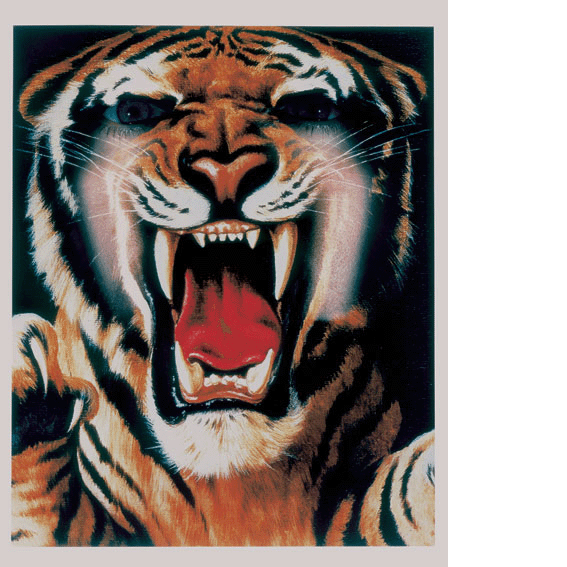Sammlung / Collection
01 Jun - 17 Aug 2008
migros museum für gegenwartskunst Zürich
1978–2008
1st June – 17th August 2008
Press Conference: Friday, 30th May, 2008, 11.30 am
Opening: Saturday, 31st May 2008, 6 pm
Art Basel Reception: Sunday, 1st June, 5 pm
Carl Andre – Art & Language – Atelier van Lieshout – John Baldessari – Lothar Baumgarten – Alighiero Boetti – Christine Borland – Olaf Breuning – Christoph Büchel – Heidi Bucher – Stefan Burger – Tom Burr – Jean-Marc Bustamante – Maurizio Cattelan – Marc Camille Chaimowicz – Spartacus Chetwynd – Marlene Dumas – Elmgreen & Dragset – Berta Fischer – Urs Fischer – Sylvie Fleury – Gabríela Fridriksdóttir – Douglas Gordon – San Keller – Sol LeWitt – Christian Marclay – Olivier Mosset – Juan Muñoz – Bruce Nauman – Olaf Nicolai – Cady Noland – Henrik Olesen – Giulio Paolini – David Renggli – Ugo Rondinone – Ed Ruscha – Robert Ryman – Jean-Frédéric Schnyder – Paul Thek – Rirkrit Tiravanija – Niele Toroni – Piotr Uklanski – Banks Violette – Philip Wiegard – Stephen Willats – Christopher Wool
This exhibition has been organised to mark the 30th anniversary of the Migros-Genossenschafts-Bund’s collecting activities, and has involved a three-year overhaul of the entire collection. A large number of old and new works from the collection is being displayed, encompassing all the various collection periods – from Minimalism and Conceptual Art in the 1960s and 1970s to contemporary works setting socio-political, performative, glamorous or surreal strategies off against each another. The integration of the collection, which looks at contemporary art production directed at a broad-minded public and provides continual exposure to new and different thematic points of view, into a lively environment, is the central concern of the exhibition. With this purpose in mind, exhibition architecture by Markus Schinwald is being used, which gives the observer the opportunity to have a “new view” of the works.
In founding the migros museum für gegenwartskunst in 1996 in the Löwenbräu complex in Zurich, where the Kunsthalle Zürich, the galleries Eva Presenhuber, Hauser & Wirth, Bob von Orsouw and Peter Kilchmann are also now located, the Migros-Kulturprozent created an institution whose main task is to mediate access to contemporary art, while at the same time creating an exhibition space for the collection of the Migros-Genossenschafts-Bund. The idea of the Migros-Kulturprozent dates back to the initiative of Migros founder Gottlieb Duttweiler (1888–1962). His wishes stipulated that the Migros-Genossenschafts-Bund and the Migros-Genossenschaften should make an annual contribution to the Migros-Kulturprozent. The contribution is calculated according to turnover, and is also provided in times of recession in retail business. This quite unique patron-like commitment became firmly anchored in the statutes of Migros in 1957, guaranteeing the future and continuity of the Migros-Kulturprozent. The migros museum für gegenwartskunst can be understood as a centre of contemporary art production. The term contemporary art itself implies integration in a social context and involvement in a process of exchange in the production of art. The exhibitions in the migros museum für gegenwartskunst set out to formulate art history through an open process.
For the most part, collection acquisitions have resulted from exhibition productions or work undertaken directly with the artists. In this way various large-scale installative works have been acquired over the decades. This was already happening during the life of InK – Halle für internationale neue Kunst, a forerunner of the migros museum für gegenwartskunst founded by Urs Raussmüller, which was based at Limmatstrasse 87 from 1978 to 1981, not too far away from the museum’s current location. The migros museum für gegenwartskunst is almost unique in the way that it enables the collection of extremely complex and elaborate installations that otherwise would have stood little chance of being preserved. From the outset the various protagonists have been in charge of collecting activities; Urs Raussmüller (1976–1985), Jacqueline Burckhardt (1986–1990), and Rein Wolfs (1991–2001), who under the leadership of Arina Kowner of the Directorate of Cultural and Social Affairs of the Migros-Genossenschafts-Bund, was able to found the museum in 1996, which was handed on to Heike Munder, its current director, in 2002. The collection’s core inventory of circa 450 works has been accumulated during the three decades from 1978–2008. The collection works are not on permanent display, but usually come to public view alongside contemporary art positions within the context of actual exhibitions. In this manner the visitor experiences the collection works in the context of current art production and discovers their numerous facets anew.
The exhibition architecture of this comprehensive collection presentation has been created by a further development of the display form of Markus Schinwald’s exhibition, which was on view in the museum from 16th February to 18th May 2008. Schinwald, who oriented his spatial design to that of Friedrich Kiesler (1890–1965), has achieved more than a mere arrangement of the works; he has furthered the concept of holistic Correalism, which opposed the dominating advocacy of Functionalism in Kiesler’s time. It is the individual requirements of people or the works themselves that figure in the foreground and for which flexible designs have to be created. In this way the exhibition of the collection works fuses different periods and conceptual foci – whether socio-political approaches, the phenomenon of the “uncanny”, subcultures in music, or the discourse of glamour. The exhibition display uses the “Trager and Leger (T and L) system”, which integrates the spectator into the spatial and temporal context. Kiesler developed the so-called “T+L System” in 1924 for the Internationale Ausstellung neuer Theatertechnik in Vienna. It comprises a flexible, free-standing construction for the presentation of objects and pictures. Within it the spectator is made conscious of his role as “active see-er” (aktiver Sehender), and can follow and develop his/her own analogies and narrative strands. Kiesler described his concept of this architecture in the following terms: “Contact, not separation and resignation. They are set up for participation not isolation.”
The exhibition is curated by Heike Munder and Markus Schinwald.

